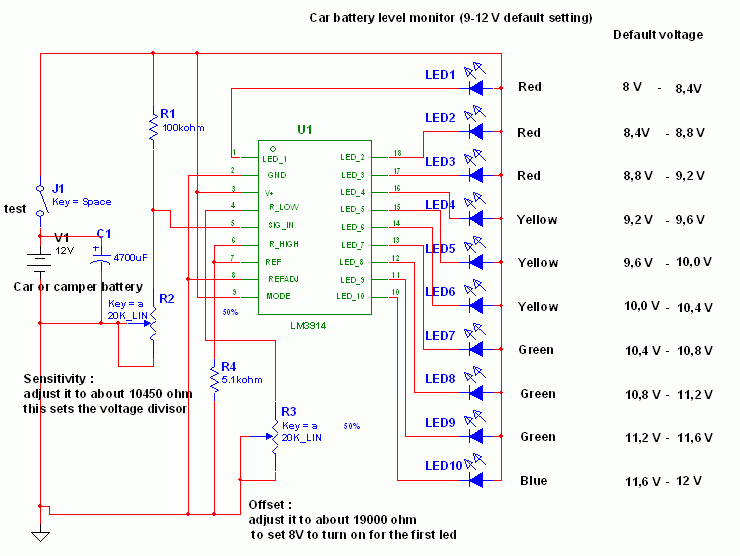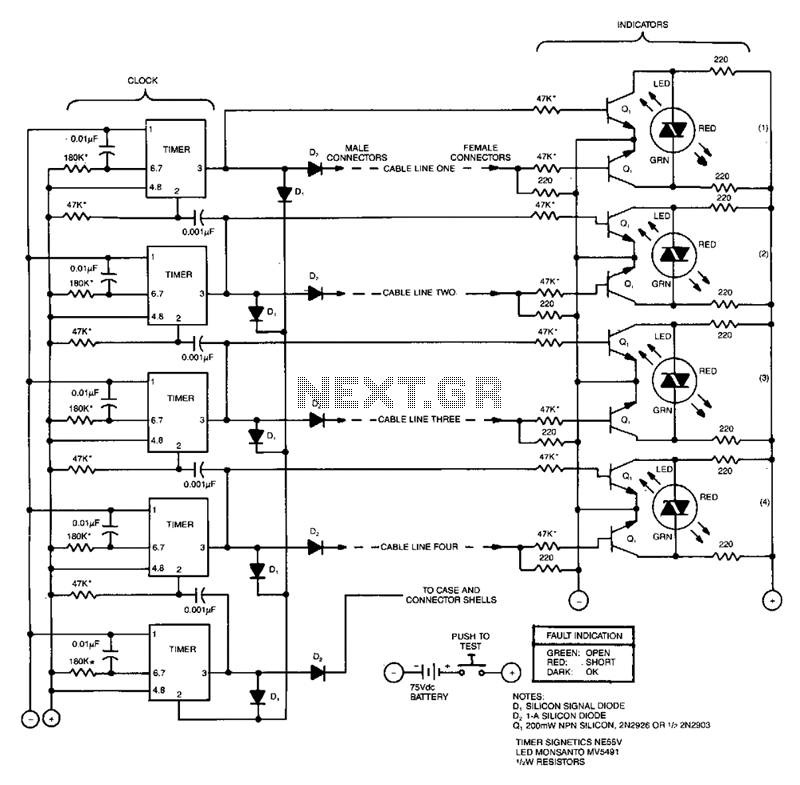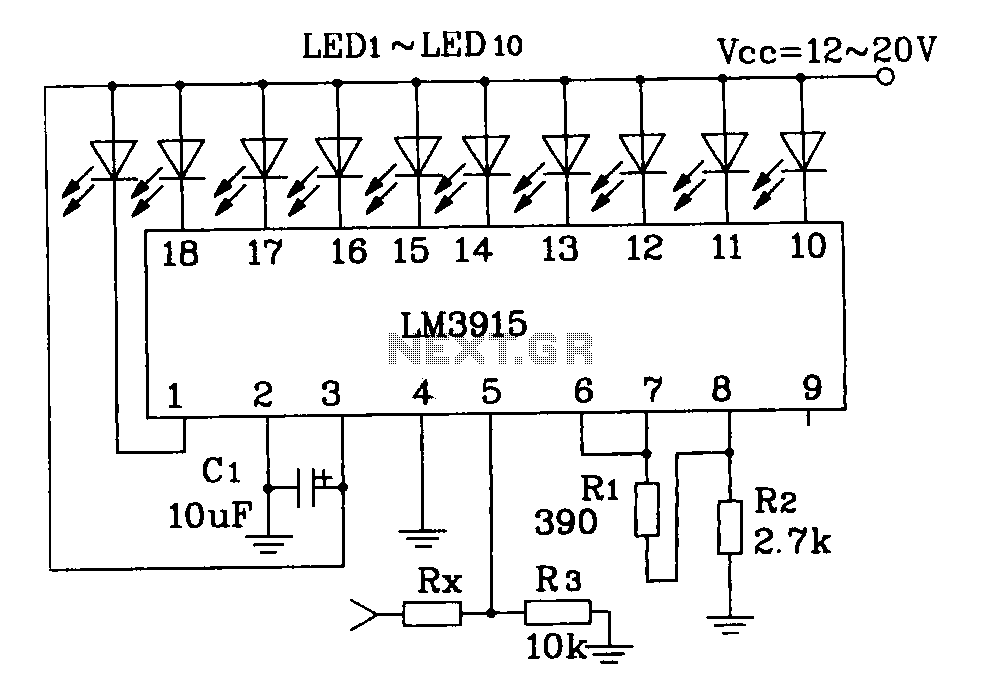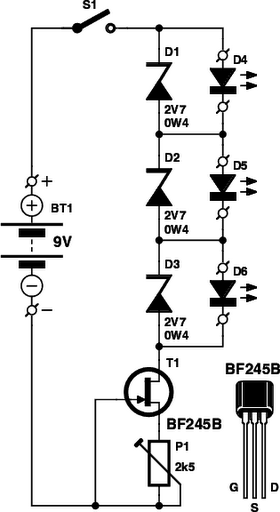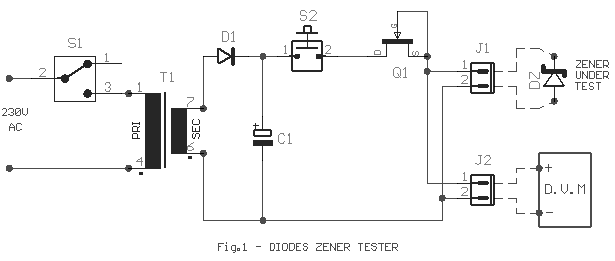
Simple continuity tester
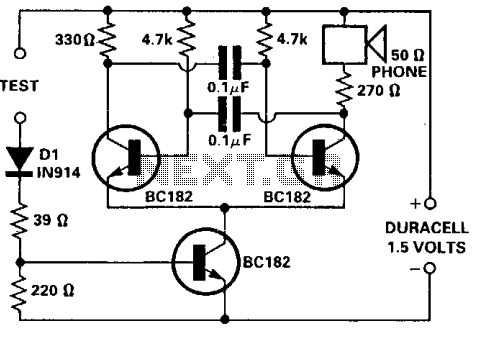
This tester is designed for tracing wiring on Printed Circuit Boards (PCBs). Resistors below 50 ohms function as a short circuit, while those above 100 ohms behave as an open circuit. The circuit utilizes a simple multivibrator activated by transistor T3. The components connected to the base of T3 include D1, R1, R2, and the test resistance. Additionally, a 1.5-volt supply is insufficient to activate a semiconductor linked to the test terminals.
The PCB tracing tester operates by measuring the resistance across various points in a circuit. It distinguishes between short circuits and open circuits based on the resistance values encountered. When the resistance is below 50 ohms, the tester identifies this condition as a short circuit, indicating an unintended connection between conductive paths. Conversely, resistance values exceeding 100 ohms signal an open circuit, suggesting a break in the connectivity.
The core of the tester's functionality lies in its multivibrator circuit, which is triggered by the transistor T3. The base of T3 is connected to several components, including a diode (D1) and resistors (R1 and R2), which work together to control the switching behavior of T3. When the resistance at the test points is low, the multivibrator oscillates, providing an output that can be interpreted as a signal indicating a short circuit. In the absence of sufficient voltage, such as from a 1.5-volt supply, the tester may not be able to turn on any connected semiconductor devices, which limits its functionality in certain scenarios.
To enhance the performance of the tester, a higher voltage supply may be employed to ensure that the semiconductor components can be adequately activated. This adjustment would allow for more effective testing of components and circuits, improving the reliability of the results obtained during PCB diagnostics. The simplicity of the circuit design allows for easy troubleshooting and maintenance, making it an invaluable tool for electronics engineers and technicians when tracing wiring and diagnosing issues in printed circuit boards.This tester is for tracing wiring on Printed Circuit Boards. Resistors below 50 ohms act as a short circuit; above 100 ohms as an open circuit. The circuit is a simple multivibrator switched on by transistor T3. The components in the base of T3 are Dl, Rl, R2, and the test resistance. With a 1,5 volt supply, there is insufficient voltage to turn on a semiconductor connected to the test terminals.
The PCB tracing tester operates by measuring the resistance across various points in a circuit. It distinguishes between short circuits and open circuits based on the resistance values encountered. When the resistance is below 50 ohms, the tester identifies this condition as a short circuit, indicating an unintended connection between conductive paths. Conversely, resistance values exceeding 100 ohms signal an open circuit, suggesting a break in the connectivity.
The core of the tester's functionality lies in its multivibrator circuit, which is triggered by the transistor T3. The base of T3 is connected to several components, including a diode (D1) and resistors (R1 and R2), which work together to control the switching behavior of T3. When the resistance at the test points is low, the multivibrator oscillates, providing an output that can be interpreted as a signal indicating a short circuit. In the absence of sufficient voltage, such as from a 1.5-volt supply, the tester may not be able to turn on any connected semiconductor devices, which limits its functionality in certain scenarios.
To enhance the performance of the tester, a higher voltage supply may be employed to ensure that the semiconductor components can be adequately activated. This adjustment would allow for more effective testing of components and circuits, improving the reliability of the results obtained during PCB diagnostics. The simplicity of the circuit design allows for easy troubleshooting and maintenance, making it an invaluable tool for electronics engineers and technicians when tracing wiring and diagnosing issues in printed circuit boards.This tester is for tracing wiring on Printed Circuit Boards. Resistors below 50 ohms act as a short circuit; above 100 ohms as an open circuit. The circuit is a simple multivibrator switched on by transistor T3. The components in the base of T3 are Dl, Rl, R2, and the test resistance. With a 1,5 volt supply, there is insufficient voltage to turn on a semiconductor connected to the test terminals.

